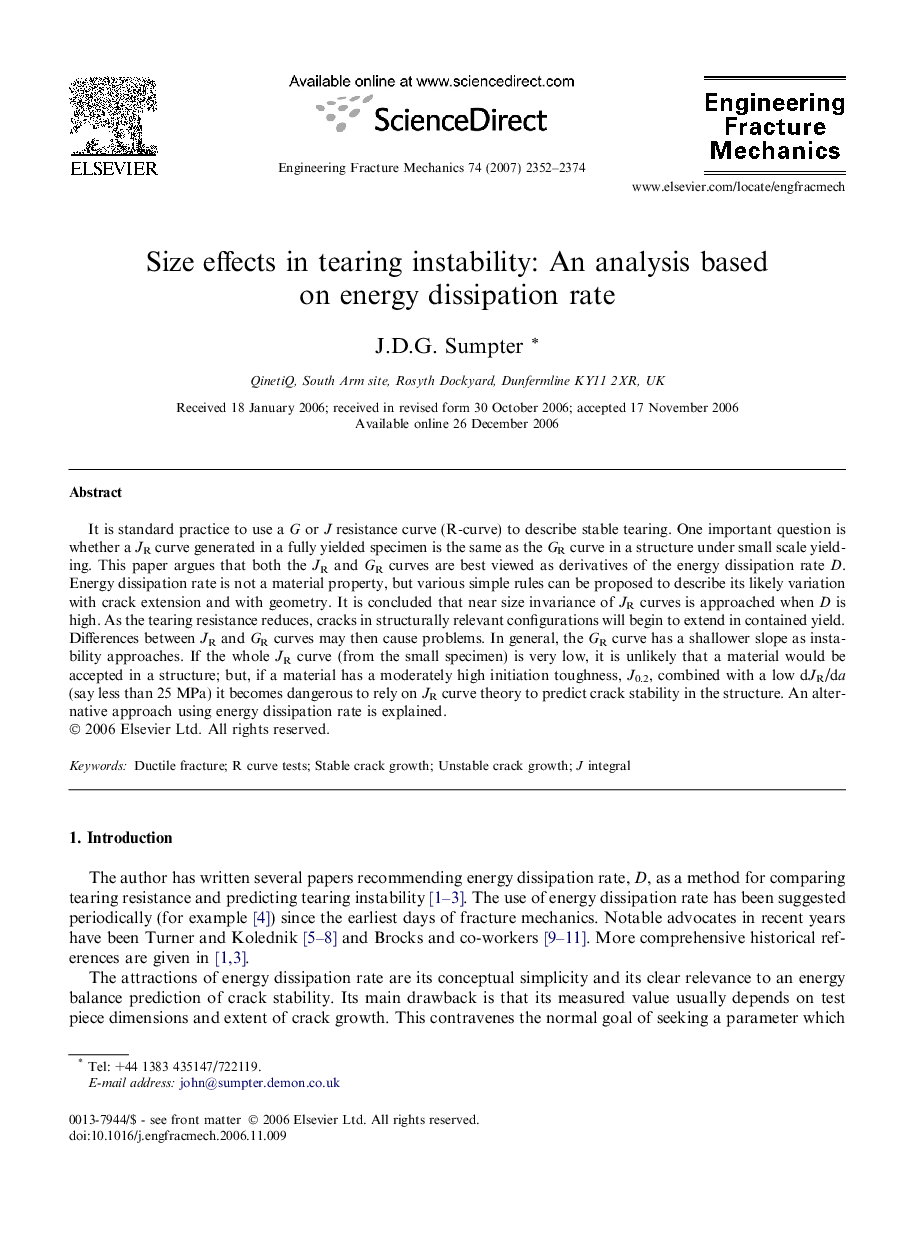| کد مقاله | کد نشریه | سال انتشار | مقاله انگلیسی | نسخه تمام متن |
|---|---|---|---|---|
| 768045 | 897279 | 2007 | 23 صفحه PDF | دانلود رایگان |
عنوان انگلیسی مقاله ISI
Size effects in tearing instability: An analysis based on energy dissipation rate
دانلود مقاله + سفارش ترجمه
دانلود مقاله ISI انگلیسی
رایگان برای ایرانیان
کلمات کلیدی
موضوعات مرتبط
مهندسی و علوم پایه
سایر رشته های مهندسی
مهندسی مکانیک
پیش نمایش صفحه اول مقاله

چکیده انگلیسی
It is standard practice to use a G or J resistance curve (R-curve) to describe stable tearing. One important question is whether a JR curve generated in a fully yielded specimen is the same as the GR curve in a structure under small scale yielding. This paper argues that both the JR and GR curves are best viewed as derivatives of the energy dissipation rate D. Energy dissipation rate is not a material property, but various simple rules can be proposed to describe its likely variation with crack extension and with geometry. It is concluded that near size invariance of JR curves is approached when D is high. As the tearing resistance reduces, cracks in structurally relevant configurations will begin to extend in contained yield. Differences between JR and GR curves may then cause problems. In general, the GR curve has a shallower slope as instability approaches. If the whole JR curve (from the small specimen) is very low, it is unlikely that a material would be accepted in a structure; but, if a material has a moderately high initiation toughness, J0.2, combined with a low dJR/da (say less than 25Â MPa) it becomes dangerous to rely on JR curve theory to predict crack stability in the structure. An alternative approach using energy dissipation rate is explained.
ناشر
Database: Elsevier - ScienceDirect (ساینس دایرکت)
Journal: Engineering Fracture Mechanics - Volume 74, Issue 15, October 2007, Pages 2352-2374
Journal: Engineering Fracture Mechanics - Volume 74, Issue 15, October 2007, Pages 2352-2374
نویسندگان
J.D.G. Sumpter,